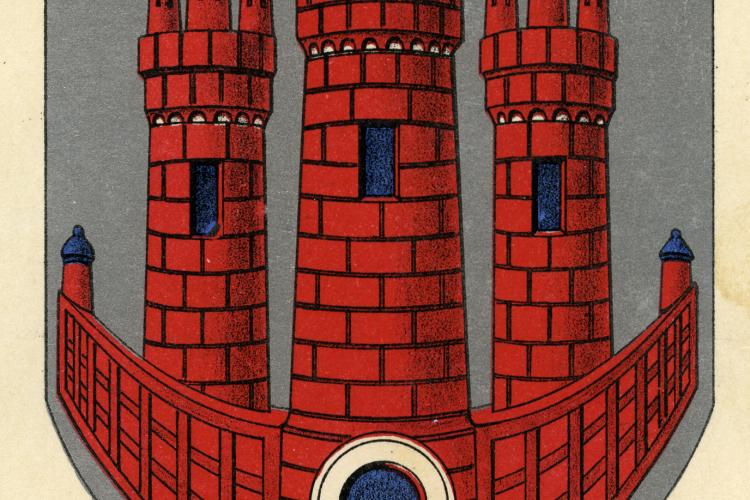Stege Castle
In the years 1976-77 and again in 2000 archaeological excavations revealed remains of a significant castle construction. The original castle, which was supposedly made of wood, was probably built during Valdemar II – Valdemar the Conqueror (ruling in the early 1200s) - perhaps by Jakob Sunesøn who ruled Møn as his personal estate from 1225 until his death in 1246.
In the years until 1534, Stegeborg was in different hands and underwent several renovations. In 1314, the castle was rebuilt by King Erik Menved. Then, it was probably a tiled building and, according to tradition, with three towers. To this day this is still a part of Stege’s town arms. It had a wide moat with a powerful bulwark on the castle side and an outer edge, hundreds of massive oak planks. These planks are still standing underground at Netto and the parking lot. The moat is absolutely unique amongst the Danish medieval finds.
Around 1360, Valdemar IV Atterday (the epithet meaning ‘A new Dawn’) fortified the castle yet again, so the walls became ten feet thick and the key to the gate itself was almost two feet long! The middle tower was so tall that it easily compared with 'the one in Copenhagen'.
In 1533 there was civil war in Denmark. Citizens and peasants fought against aristocracy and priests. After Frederik I’s death, the citizens wanted the return of Christian II, who had gone into exile in 1523. The aristocracy wanted at all cost to avoid his return, as Christian II had favoured the people over the aristocracy during his reign. Christian II received help from the Hanseatic town of Lübeck, who sent an army to Denmark under the leadership of Count Christoffer of Oldenburg. This civil war was titled as the ‘Counts Feud’.
The end to Stege Castle in 1534 has tangled threads.What seems to have happened is that vassal Anders Bille from the royal Stegeborg had traveled to his Søholm estate, and before that he handed over the command to 4 nobles and 4 citizens. Immediately after, the castle keeper Hans Stigsøn was lured into the town and killed. By betrayal of the citizens in which Anders Bille had entrusted castle law, the gates to the castle were opened and a crowd of angry citizens overran and plundered the castle, finally blowing it up. Anders Bille’s daughter, Virgin Clara and the other aristocratic prisoners were sent to Count Christoffer. Cattle, grains and food were distributed among the citizens.
When Anders Bille comes home and shortly after joins the Count, now suddenly on the side of the aristocracy, he gets back the half of the plundered estate that had fallen into the hands of the Count. Hereafter, Anders Bille uses his position to severely punish Stege's citizens for their betrayal. Apparently, ‘the four citizens had to stretch their necks in the square in Stege’. As a deterrent, the sculls of these four men were then built into the wall behind the altar in Stege church.
During the excavations in connection with the construction of Netto and the adjacent residential buildings two of the castle's corners along with a large piece of the moat's defences were uncovered. One of these corners is still buried several metres below Netto's cold counters!
The castle was never rebuilt despite several attempts, but the corresponding barnyard was still functioning for hundreds of years.
Now, continue along the red residential building and turn left at the end.




